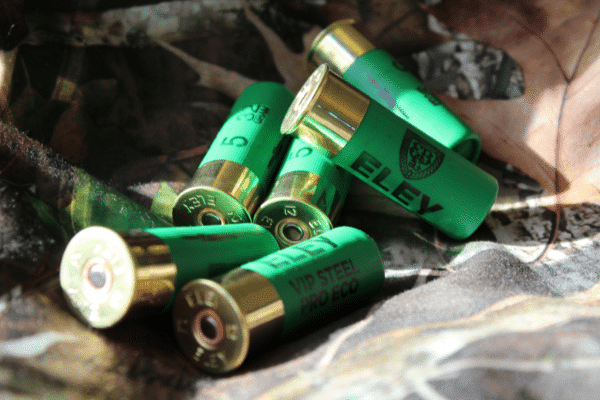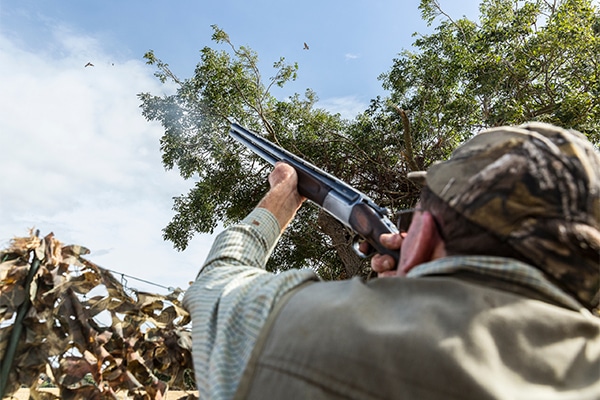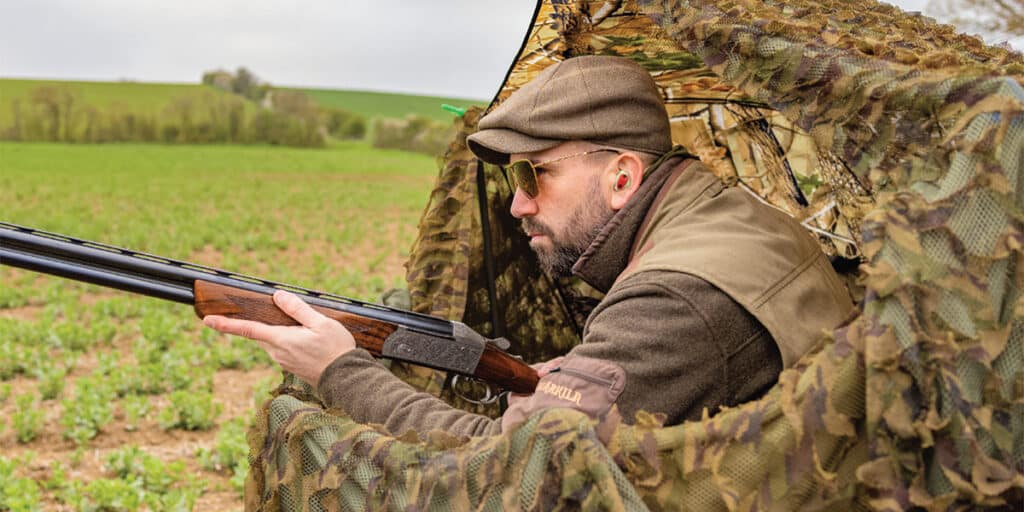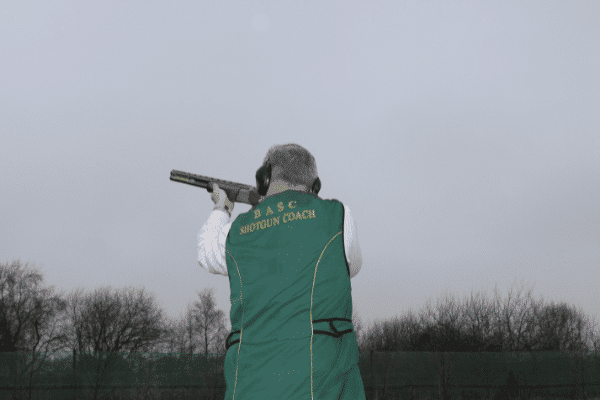
Moving to sustainable ammunition
If you are planning to move away from lead ammunition now is a good time to place your order to ensure demand can be met.
Get information on the legal shooting season for mammals and birds in the UK.
Apply for funding for your project or make a donation today
Comprehensive information and advice from our specialist firearms team.
Everything you need to know about shotgun, rifle and airgun ammunition.
Find our up-to-date information, advice and links to government resources.
Everything you need to know on firearms law and licensing.
All the latest news and advice on general licences and how they affect you.


Terry Behan is a keen pigeon shooter. But what has he learnt over the years to help him improve his success in the hide?
As I write this, spring certainly seems to have sprung. Drills are being dusted off in farmyards across the country and new crops are being sown. It’s an exciting time for the pigeon shooter.
The change of season presents new crop protection opportunities, too. But how to make the most of them? Over the years I’ve identified a few things that seem to have made a real difference to my success in a pigeon hide. So, in no particular order…
Bright sunshine can be a problem; it is unforgiving if you have any kit that might glint in an unnatural way – think hide poles, netting, plastic decoys and the metal parts of flappers, cradles, etc. – and the same goes for our skin and clothing. For this reason, I always make sure any kit that might shine is taped up or has been treated to a coat of matt paint. I also wear drab colours and ensure movement in the hide is limited – only getting up at the very last moment before taking a shot. This is crucial.
I have learnt the hard way that decoy choice and positioning on a sunny day often merits careful thought, too. If you’re unable to set up underneath a flightline, and you’re relying on drawing birds away from one and into shooting range, decoys need to be visible – and that means ensuring the white bars on the neck and wings are gleaming proudly. Are your decoys up to the job? Would dead birds work better than artificial ones? Is your pattern being shaded by a tree or a tall hedgerow? All factors worthy of consideration.
Many pigeon shooters now use a magnet – or rotary/whirligig, if you prefer – when decoying. Some people will even use a couple. The issue comes when pigeons become aware that these game-changing contraptions mean being shot (at), as they start to flare away from them.
The wariness of ‘educated’ pigeons, i.e., those that have been shot at a few times when approaching a magnet, can be used against them – and to your advantage – if you change the position of a magnet in relation to your hide.
For instance, if you move your magnet further into the field and the birds flare away from it, they may be pushed towards your decoy pattern. Positioning is key, though; if you haven’t properly established the flightlines coming into a field, you can end up pushing pigeons further away from your hide.

When undertaking your reconnaissance, do you consider the trees? Do you look at pigeon activity near a tree or have that instinct where you look at a certain tree and think “yes, that’s one the pigeons will love, I will set up there”?
Pigeons move around; they may roost in a tree adjacent to a field of food for a day or two and then move on.
I always try to think of trees as roundabouts and ponder what side of the tree the birds will most likely fly past before seeing my decoys. Will the wind be in my favour to turn them into the decoys? Will the tree be shading my decoys?
One thing I will not do is set up under a tree with overhanging branches. It might be tempting from a concealment perspective, but the obstruction posed when shooting birds overhead is a real bag reducer. Instead, I tend to set up next to a favourable tree but along the line of a hedge. If the tree is in the middle of a field with no hedgerow, I will set up adjacent to the tree and use the tree to steer the birds into my decoy pattern.
How many decoys to use? And how should they be arranged? These are questions we ask ourselves regularly as pigeon shooters. Over the years I have seen people build a bag using sacks of decoys and I have seen people doing very well starting with just one decoy.
The way I look at it is that we should be trying to replicate what we see in the field. The crop type, weather conditions and numbers of birds in the area can influence how birds will feed. Sometimes you will see pigeons grouped tightly together; other times, there will be more space between them. This will dictate both how you arrange your birds and how many you will need to replicate what you have seen during your sessions with the binoculars. If you have done your reconnaissance, you should know what the pigeons will be expecting to see when they start to arrive.

For many people, setting up in the middle of a field is a complete novelty and they do not feel comfortable without a hedge behind them to break up their silhouette. But setting up in the middle of a field – especially on big fields – can really bolster success. After all, one of the first rules of pigeon shooting is that you must set up where the birds want to be – not where you want to be.
When I set up in the middle of a field I use a large camouflage umbrella (pictured above), and I drape my net over the top and clip it to my normal hide that goes around me. This gives me a perfect window to stand and shoot pigeons from at all angles except behind.
Other options are bale hides (for later in the year) or even a hide dug into the ground. The latter two options will, of course, require the permission of the landowner.
A key responsibility of all pigeon shooters is to stay up to date with the latest general licences. The current general licence applicable to woodpigeon control to protect crops – GL42 (‘to prevent serious damage’) – is valid until 31 December 2023.
You do not need to apply to use this general licence, but you are required by law to abide by its terms and conditions.
If you have any questions about general licences, you can always call your BASC regional office – or visit basc.org.uk/gl


If you are planning to move away from lead ammunition now is a good time to place your order to ensure demand can be met.

To mark International Coaching Week, we sat down for a chat with one of BASC’s coaching stalwarts, Duncan Greaves.

BASC believes that sustainable shooting will benefit from a review of EU legislation through the ‘Brexit Freedoms’ Bill.
Sign up to our weekly newsletter and get all the latest updates straight to your inbox.
© 2025 British Association for Shooting and Conservation. Registered Office: Marford Mill, Rossett, Wrexham, LL12 0HL – Registered Society No: 28488R. BASC is a trading name of the British Association for Shooting and Conservation Limited which is authorised and regulated by the Financial Conduct Authority (FCA) under firm reference number 311937.
BASC Direct Ltd is an Introducer Appointed Representative of Agria Pet Insurance Ltd who administer the insurance and is authorised and regulated by the Financial Conduct Authority, Financial Services Register Number 496160. Agria Pet Insurance is registered and incorporated in England and Wales with registered number 04258783. Registered office: First Floor, Blue Leanie, Walton Street, Aylesbury, Buckinghamshire, HP21 7QW. Agria insurance policies are underwritten by Agria Försäkring.
If you have any questions or complaints about your BASC membership insurance cover, please email us. More information about resolving complaints can be found on the FCA website or on the EU ODR platform.